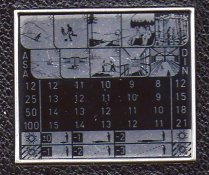David Lyga
Member
There is something mentally exhilarating with taking a bare, meter-less camera and shooting correctly, knowing how to expose for the light that is there. To aid in this fantasy, I translate all shutter speeds and aperture settings into exposure values (EV) calling the combination thereof, simply a CEV. In other words, a given scene, in conjunction with a given film speed, requires, simply, a determined CEV, a single number. This elimination of a meter 'telling' me how to expose allows me to consider the camera an extension of my eye and brain.
Take a standard ISO 400 film: the exposure that I would give for an extremely sunny scene with shadow detail that is not predominant would be either a '17' or even '16' (if the shadow detail is really important). This is not the problem and the sunny f 16 rule comes to the mighty rescue (but my CEVs prevent having to use only f16). The real problems emanate from those overcast days where the determination of just how much light is coming forth becomes a bit more trying. I have learned that this amount of light can wreck mental havoc and the eye's need to assimilate and modify its response can add to the confusion. Is the scene a '12'? Is the scene a '10'? Is the scene a '14'? Indoors is a bit easier as 'artificial light' can be categorized into 'high', 'medium', 'low', 'dim', etc with surprising efficiency and accuracy.
Reflectance meters can be a problem if you are not fully aware that they want to see only medium gray and don't know that a particular scene does NOT want to be categorized as such. White people in light colored clothing against a light backdrop turns that meter into an obstacle. Black people in dark clothing against a dark backdrop turns that meter into an obstacle. Neither scenes are accurately portrayed as medium in tone. But the mind, equipped with knowledge about the light's intensity, can save the day in such situations.
Bottom line: am I being falsely optimistic or is it really possible to capture the intention of light with one's accumulated knowledge and experiences? How much freer I would feel without the meter as being part of my handicap. - David Lyga
Take a standard ISO 400 film: the exposure that I would give for an extremely sunny scene with shadow detail that is not predominant would be either a '17' or even '16' (if the shadow detail is really important). This is not the problem and the sunny f 16 rule comes to the mighty rescue (but my CEVs prevent having to use only f16). The real problems emanate from those overcast days where the determination of just how much light is coming forth becomes a bit more trying. I have learned that this amount of light can wreck mental havoc and the eye's need to assimilate and modify its response can add to the confusion. Is the scene a '12'? Is the scene a '10'? Is the scene a '14'? Indoors is a bit easier as 'artificial light' can be categorized into 'high', 'medium', 'low', 'dim', etc with surprising efficiency and accuracy.
Reflectance meters can be a problem if you are not fully aware that they want to see only medium gray and don't know that a particular scene does NOT want to be categorized as such. White people in light colored clothing against a light backdrop turns that meter into an obstacle. Black people in dark clothing against a dark backdrop turns that meter into an obstacle. Neither scenes are accurately portrayed as medium in tone. But the mind, equipped with knowledge about the light's intensity, can save the day in such situations.
Bottom line: am I being falsely optimistic or is it really possible to capture the intention of light with one's accumulated knowledge and experiences? How much freer I would feel without the meter as being part of my handicap. - David Lyga
Last edited:








